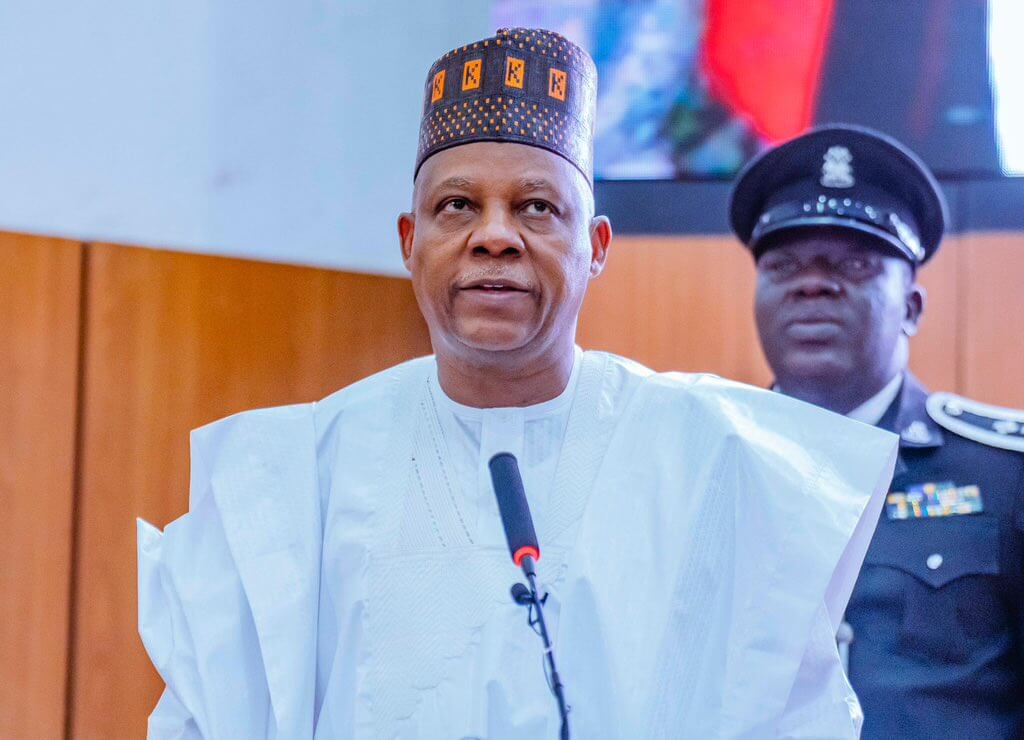In a new report, the World Health Organisation (WHO) and United Nations Children’s Fund (UNICEF) said global childhood immunisation coverage has stalled, leaving about 2.7 million children un- and under-vaccinated.
This was contained in the latest WHO and UNICEF estimates of national immunisation coverage (WUENIC) published by WHO on Monday on its website.
UNICEF Executive Director Catherine Russell said global efforts are needed to close the immunisation gap.
She said: “The latest trends demonstrate that many countries continue to miss far too many children. Closing the immunisation gap requires a global effort, with governments, partners, and local leaders investing in primary healthcare and community workers to ensure every child gets vaccinated and that overall healthcare is strengthened.”
Data
According to the new findings, the number of children who received three doses of diphtheria, tetanus, and pertussis (DTP) vaccine, a key indicator of global immunisation coverage, remained stagnant at 84 per cent (108 million) in 2023.
It, however, noted that the number of children who did not receive a single dose of the vaccine rose from 13.9 million in 2022 to 14.5 million in 2023.
In fragile and conflict-affected countries, over 50 per cent of unvaccinated children lack access to necessities like healthcare, nutrition, and security, leaving them highly vulnerable to preventable diseases, the report revealed.
Nigerians need credible journalism. Help us report it.
PREMIUM TIMES delivers fact-based journalism for Nigerians, by Nigerians — and our community of supporters, the readers who donate, make our work possible. Help us bring you and millions of others in-depth, meticulously researched news and information.
It’s essential to acknowledge that news production incurs expenses, and we take pride in never placing our stories behind a prohibitive paywall.
Will you support our newsroom with a modest donation to help maintain our commitment to free, accessible news?
Furthermore, 6.5 million children failed to receive their third dose of the DTP vaccine, which is crucial for protecting against diseases in infancy and early childhood.
The global bodies stated that the stagnation in global immunisation coverage since 2022 and the failure to return to 2019 levels is a cause for concern, adding that it highlights the persistent challenges posed by disruptions to healthcare services, logistical issues, vaccine hesitancy, and unequal access to services.
Resurgence of measles outbreaks
According to the data, measles vaccination rates have stalled, resulting in approximately 35 million children lacking complete protection or having no protection at all against this potentially fatal disease.
Global measles vaccination rates in 2023 fell short of the targeted 95 per cent coverage needed for elimination, with only 83 per cent of children receiving their first dose and 74 per cent receiving their second dose, leaving a significant gap in protection against outbreaks, disease, and preventable deaths, it revealed.
It stated that between 2018 and 2023, a total of 103 countries, accounting for approximately 75 per cent of the global infant population, were affected by measles outbreaks, stating that these outbreaks were largely attributed to low vaccination coverage (below 80 per cent ).
In stark contrast, 91 countries with high measles vaccination coverage (above 80 per cent ) successfully avoided outbreaks, highlighting the critical role of robust vaccine coverage in preventing measles transmission.
WHO’s Director-General, Tedros Ghebreyesus, said measles outbreaks expose immunisation gaps, but vaccines can prevent them.
He said, “Measles outbreaks are the canary in the coal mine, exposing and exploiting gaps in immunisation and hitting the most vulnerable first.
“This is a solvable problem. The measles vaccine is cheap and can be delivered even in the most difficult places. WHO is committed to working with all our partners to support countries to close these gaps and protect the most at-risk children as quickly as possible.”
Progress recorded
The latest figures also revealed encouraging trends in immunisation coverage. The phased introduction of new and underutilised vaccines, including those for human papillomavirus (HPV), meningitis, pneumococcal disease, polio, and rotavirus, is broadening the scope of protection, notably in the 57 countries receiving support from Gavi, the Vaccine Alliance.
They said there has been an increase in the global percentage of adolescent girls receiving at least one dose of the HPV vaccine, which protects against cervical cancer, rising from 20 per cent in 2022 to 27 per cent in 2023.
According to them, this progress was attributed to successful implementations in countries supported by Gavi, notably Bangladesh, Indonesia, and Nigeria, and the introduction of a single-dose HPV vaccine schedule, which has contributed to the overall increase in vaccine coverage.
The CEO of Gavi, the Vaccine Alliance, Sania Nishtar, said the HPV vaccine reaches more girls than ever, paving the way to eliminate cervical cancer.
“The HPV vaccine is one of the most impactful vaccines in Gavi’s portfolio, and it is incredibly heartening that it is now reaching more girls than ever before.
“With vaccines now available to over 50 per cent of eligible girls in African countries, we have much work to be done, but today, we can see we have a clear pathway to eliminating this terrible disease,” she said.
They stated that although HPV vaccine coverage has increased, it remains significantly short of the 90 per cent target required to eliminate cervical cancer as a public health issue.
In high-income countries, coverage stands at 56 per cent, while in low- and middle-income countries, it is just 23 per cent.
The report revealed that a recent poll of over 400,000 users on UNICEF’s U-Report platform revealed alarming gaps in awareness, with 75 per cent of respondents unaware or uncertain about HPV.
However, when informed about the virus and its link to cancer, 52 per cent expressed interest in receiving the vaccine. Unfortunately, financial constraints (cited by 41 per cent ) and lack of availability (34 per cent) are significant barriers to accessing the vaccine.
READ ALSO: UNICEF delivers 12,400 cartoons of therapeutic foods to malnourished children in Jigawa
Local action essential
According to them, despite modest gains in certain regions, including Africa and low-income countries, the latest estimates underscore the urgent need to intensify efforts to achieve the Immunisation Agenda 2030 targets.
These goals include attaining 90 per cent vaccination coverage and reducing the number of “zero-dose” children worldwide to no more than 6.5 million by 2030.
The report said to accomplish this, the IA2030 Partnership Council advocated for increased investment in innovation and sustained collaboration.
They also urged partners to bolster their support for country-led initiatives that integrate routine immunisation into comprehensive primary healthcare programmes backed by robust political commitment, community engagement, and sustainable funding.
Support PREMIUM TIMES' journalism of integrity and credibility
At Premium Times, we firmly believe in the importance of high-quality journalism. Recognizing that not everyone can afford costly news subscriptions, we are dedicated to delivering meticulously researched, fact-checked news that remains freely accessible to all.
Whether you turn to Premium Times for daily updates, in-depth investigations into pressing national issues, or entertaining trending stories, we value your readership.
It’s essential to acknowledge that news production incurs expenses, and we take pride in never placing our stories behind a prohibitive paywall.
Would you consider supporting us with a modest contribution on a monthly basis to help maintain our commitment to free, accessible news?
TEXT AD: Call Willie - +2348098788999

















 English (US) ·
English (US) ·